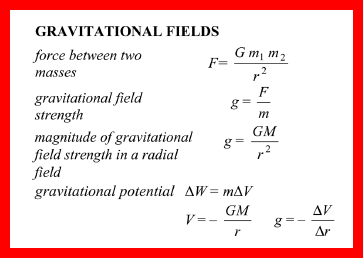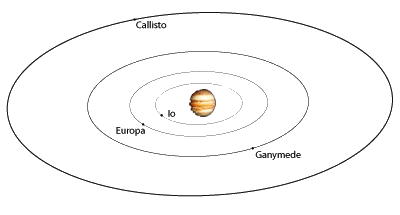Gravitational Fields Questions
Q4.
(a)
By considering the force equation for a satellite of mass m in an orbit of radius r around a planet of mass M, show that the orbital time period T of the satellite does not depend upon m.

GMm/r2 = mv2/r 
GM/r= v2
'm' cancels out
Now v = 2πr/T 
so, GM/r = 4π2r2/T2
T2= 4π2r3/GM
∴ T = 2π(r3/GM)0.5
m does not figure in the expression so T is independednt of m QED 
(3 marks)
(b) One of the moons of Jupiter, Ganymede, is the largest satellite in the solar system.

Its orbital period is equal to 7.15 Earth days and the radius of its orbit is 1.07 × 106 km. Calculate
(i) the angular speed of Ganymede in its orbit,
ω = 2π/T
ω = 2π/(7.15 x 24 x 602)
ω = 1.02 x 10-5 rad s-1
(ii) the centripetal acceleration of Ganymede in its orbit,
r = 1.07 × 106 km = 1.07 × 109 m.
a = ω
2
r = (1.02 × 10-5)2 × 1.07 × 109
a = 0.111 m s-2
(iii) the mass of Jupiter.
centripetal acceleration = g = GM/r2
M = gr2/G

M = 0.111 x (1.07 × 109)2/
6.67 × 10-11 
M = 1.91 x 1027 kg 
T2= 4π2r3/GM )
M = 4π2r3/GT2
M = 4π2(1.07 × 109)3/(6.67 × 10-11(7.15 x 24 x 602)2)
M = 1.90 x 1027 kg
(5 marks)
(Total 8 marks)


